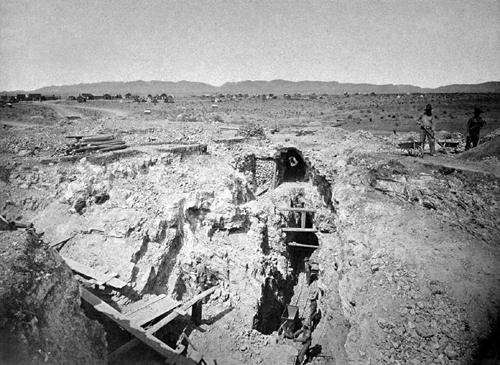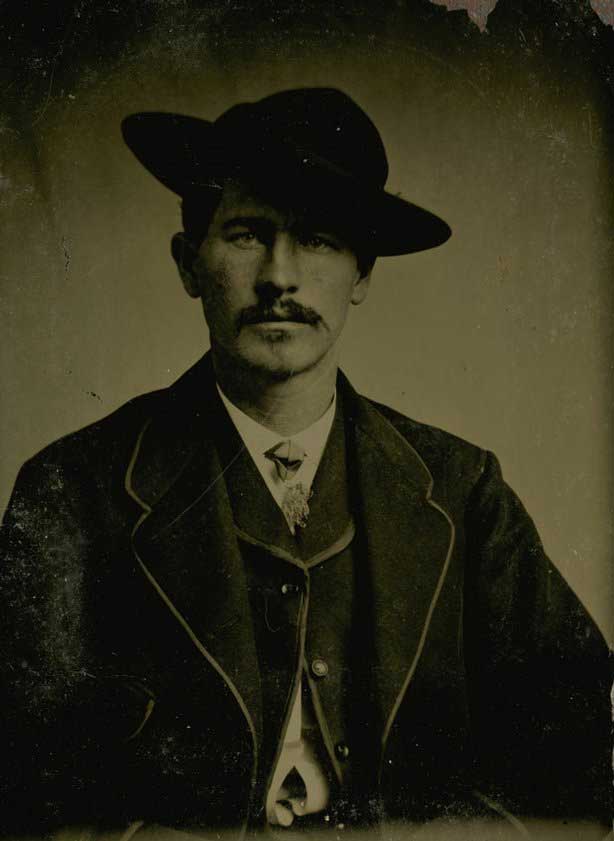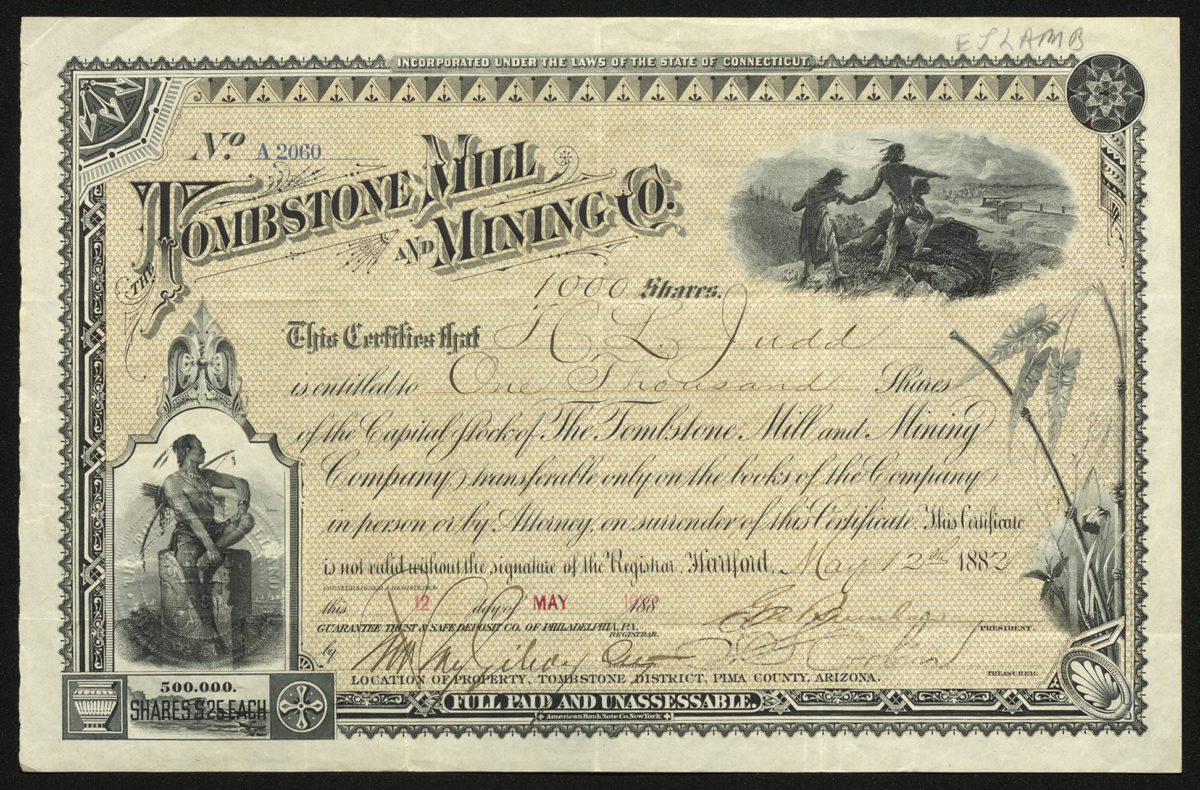
Tombstone, Arizona: the Ungoverned West
Nicknamed “The Town Too Tough to Die,” Tombstone’s streets were at times filled with gunfights, cowboys, and outlaws. The town was built on a silver strike that became one of the richest in Arizona’s history.
Header Image: The Tough Nut Mine, which was co-owned by Tombstone founder Ed Schieffelin, and became part of the Tombstone Mine and Milling Company; courtesy of Wikimedia Commons [1].
“All you’ll find in those hills is your tombstone.”

Wyatt Earp, lawman of Tombstone and the infamous shootout at the OK Corral; courtesy of Wikimedia Commons
The mining strike at Tombstone, Arizona was discovered by prospector Ed Schieffelin in 1877. Legend has it that soldiers warned Schieffelin of native Apaches in the region, telling him that if he continued to explore the hills the only stone he would find would be his tombstone. When Ed did discover silver—a find that would become one of Arizona’s richest silver mining districts, ultimately producing $37 million in silver ore—it only seemed appropriate to name the site Tombstone. Perhaps the Native Americans depicted in the vignettes on this certificate allude to this history. The image in the top right corner shows a group of Native Americans pointing in awe at a locomotive; this kind of imagery was common to this era, as technologies of the white man—like the train and mining—represented the struggle between civilization and wild savagery on the American frontier.
Prospectors like Ed Schieffelin rarely had the capital necessary to develop their claims, so investors were key to Tombstone’s success. George S. Corbin, who has signed this stock certificate as company treasurer, was a member of the Corbin family of Connecticut who were early investors in Tombstone’s mines. This is why this certificate states that the Tombstone Mine and Milling Company was incorporated under the laws of the State of Connecticut, as it was common for the business operations of western mining companies to occur in east-coast markets. It is likely that Corbin was acquainted with the bearer of this bond, H.L. Judd, and had personally recommended the investment; both the Corbin and Judd families built their wealth on hardware manufacturing and sales in Connecticut.
The Tombstone Mine and Milling Company—a consolidation of several claims including the Tough Nut Mine—was one of the most successful operations in Tombstone. The company paid over a million dollars in dividends to investors by the end of 1881. Production peaked in the early 1880s, and there were soon signs that the mines most profitable days were past: low-grade ore was being processed, tailings were being reworked, and miners’ wages declined. Hopes were high for the future of the mines when the Sherman Silver Purchase Act passed in 1890 and silver prices were temporarily inflated.
The Tombstone Mine and Milling Company was profitable enough to outlast the other major Tombstone mining companies, but finally closed operations in 1896. When Ed Scheifflin died in Oregon the following year, his body was transported back to Tombstone for burial according to his final wishes. He was buried in prospector’s clothing with a pick and canteen, at the spot where he had camped two nights before discovering silver. (Scroll down to continue reading about Tombstone below)
Tombstone is famous for the Gunfight at the OK Corral. Lawmen Virgil, Morgan, and Wyatt Earp had developed a feud with a local group of cattle rustlers and stagecoach robbers termed The Cowboys, who took issue with the Earp’s interference with their operations. Tensions came to a head on October 26, 1881, when the Earps, along with their friend Doc Holliday, confronted Cowboys Billy Clanton and Tom and Frank McLaury. The resulting gunfight was over in thirty seconds, leaving Clanton and the McLaury brothers dead, and Doc Holliday, Virgil, and Morgan Earp injured. Members of The Cowboys retaliated with an assassination attempt against Virgil that December and more successfully ambushed and killed Morgan Earp while he was playing pool several months later. Wyatt Earp thought the Sheriff Johnny Behan was not doing enough to hold the guilty parties responsible—there was bad blood between the two resulting from a romantic entanglement—so he took justice into his own hands and hunted down and killed his brothers’ attackers.
Tombstone’s image as a dangerous, lawless frontier town has been popularized by Hollywood and lore and is a great example of Wild West legend taking on a life beyond the facts. Outside of the violence between the Earps and The Cowboys, Tombstone was not an especially violent place, but it is remembered as the kind of town that ate a man for breakfast every day. Today tourists can visit the Boothill Graveyard after watching recreations of the OK Corral shootout. Legend has it that the cemetery was named for the fact that violent death was so common that men were hastily buried with their boots still on. The name was actually adopted in the 1920s to attract tourists and solidify Tombstone’s Wild West reputation. Tombstone’s official slogan, featured on the city’s seal, is “The Town Too Tough to Die,” reflecting the town’s tenacious rough-and-tumble spirit.
 University of Nevada, Reno
University of Nevada, Reno
